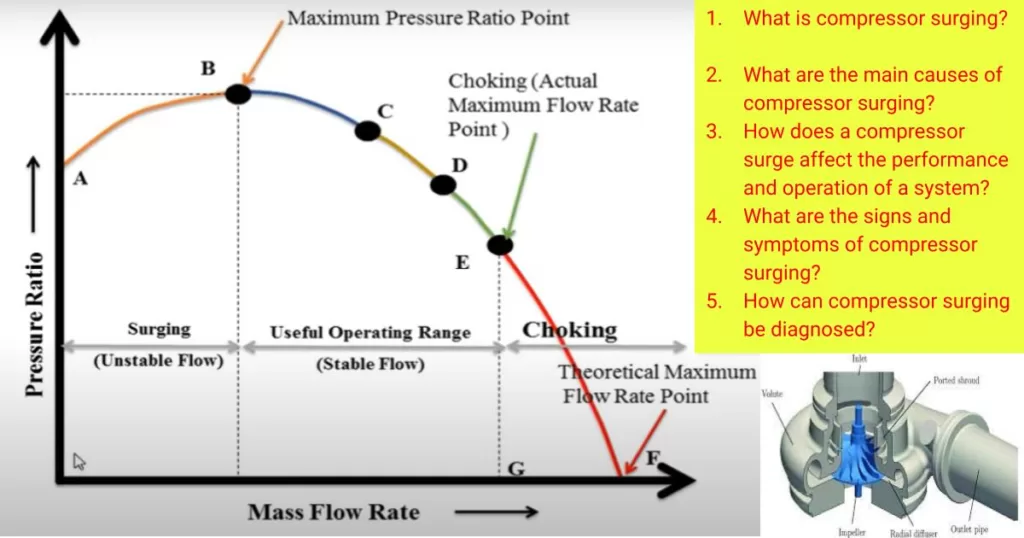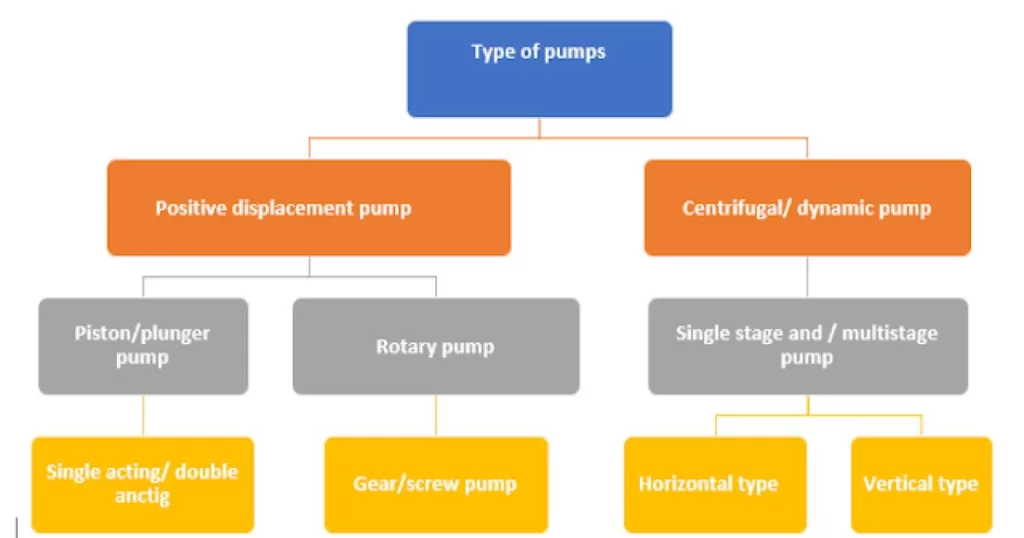Troubleshooting Compressor Surging: A Comprehensive Guide
Compressor surging issues? we will delve into the world of troubleshooting compressor surging, providing you with invaluable insights and practical solutions. Whether you’re a professional technician or a DIY enthusiast, this guide is your go-to resource to understand the causes behind compressor surging and how to fix it effectively. We will explore common symptoms, such as pressure fluctuations, strange noises, and reduced cooling performance, and uncover the underlying reasons behind these issues. From examining inadequate refrigerant levels and dirty filters to addressing faulty valves or electrical problems, we will walk you through a step-by-step troubleshooting process to identify and resolve the root cause of compressor surging. With our expert tips and strategies, you’ll be equipped to tackle any compressor surging problem with confidence. Say goodbye to frustrating surging issues and hello to smooth and uninterrupted compressor performance!

Understanding Compressor Surging
Compressor surging is a common problem that occurs when there are fluctuations in the pressure within the compressor system. It is characterized by a series of rapid starts and stops, which can lead to reduced performance and increased wear and tear on the compressor. Compressor surging can be caused by various factors, including inadequate refrigerant levels, dirty filters, faulty valves, or electrical issues. Understanding the underlying causes of compressor surging is essential in order to effectively troubleshoot and resolve the problem. By gaining a clear understanding of how compressor surging occurs and the impact it has on performance, you will be better equipped to diagnose and fix the issue.
When a compressor surges, it can result in reduced cooling performance, strange noises, and even system failure if left unresolved. These symptoms can be frustrating and costly, especially if they occur in a commercial setting where temperature control is crucial. By addressing compressor surging promptly and accurately, you can prevent further damage to the system and ensure optimal performance. In the following sections, we will explore the common causes of compressor surging and provide you with step-by-step troubleshooting techniques to identify and resolve the root cause of the issue.
Common Causes of Compressor Surging
Compressor surging can be caused by a variety of factors, each requiring a different solution. One common cause is inadequate refrigerant levels. When the refrigerant level is too low, the compressor can struggle to maintain the required pressure, resulting in surging. Another common cause is dirty filters. Over time, filters can become clogged with dust and debris, obstructing the flow of air and causing the compressor to surge. Faulty valves, such as suction or discharge valves, can also contribute to compressor surging. These valves play a crucial role in regulating the flow of refrigerant, and any malfunction can disrupt the compressor’s performance.
Electrical problems can also result in compressor surging. Issues such as loose connections, faulty wiring, or damaged capacitors can cause the compressor to operate erratically, leading to surging. It is important to consider all possible causes when troubleshooting compressor surging in order to pinpoint the exact issue and implement the appropriate solution. In the next section, we will discuss how to diagnose compressor surging and the steps to take in order to resolve the problem effectively.
How to Diagnose Compressor Surging
Diagnosing compressor surging requires a systematic approach to identify the root cause of the issue. The first step is to observe the symptoms and gather relevant information. Pay attention to any pressure fluctuations, strange noises, or reduced cooling performance. Gather data from the system, such as pressure readings and temperature differentials, to aid in the diagnosis process. Once you have gathered the necessary information, you can begin the troubleshooting process.
Start by checking the refrigerant levels. If they are low, it may indicate a leak in the system. Perform a thorough inspection of the system to identify any leaks and repair them accordingly. Next, inspect the filters and clean or replace them if necessary. Clogged filters can restrict airflow and cause the compressor to surge. Ensure that all valves are functioning properly by testing their operation and replacing any faulty valves. Finally, inspect the electrical components of the system, checking for loose connections, damaged wiring, or faulty capacitors. Address any electrical issues that are found.
By following a step-by-step troubleshooting process, you can effectively diagnose and resolve compressor surging issues. However, it is important to note that certain problems may require professional assistance. In the next section, we will discuss when it is necessary to seek professional help and the importance of regular maintenance in preventing compressor surging.
Troubleshooting Steps for Compressor Surging
1. Observe and gather information on symptoms and system data.
2. Check refrigerant levels and repair any leaks.
3. Inspect and clean or replace filters.
4. Test and replace faulty valves.
5. Inspect electrical components for issues and address them accordingly.
Preventive Measures for Avoiding Compressor Surging
While troubleshooting compressor surging is essential, taking preventive measures can help avoid the issue altogether. Regular maintenance is crucial in preventing compressor surging. Ensure that your system is inspected and serviced regularly by a qualified technician. This includes checking refrigerant levels, cleaning filters, testing valves, and inspecting electrical components. By addressing any potential issues before they escalate, you can maintain optimal performance and avoid costly repairs.
Additionally, it is important to follow proper installation and usage guidelines for your compressor system. Ensure that the system is installed correctly and that it is used within its specified operating parameters. Avoid overloading the system or subjecting it to excessive temperature variations. By following these guidelines, you can prolong the lifespan of your compressor and minimize the risk of surging.
Professional Assistance for Addressing Compressor Surging
While many compressor surging issues can be resolved through DIY troubleshooting, certain problems may require professional assistance. If you are unsure about the cause of the surging or if you are unable to resolve the issue on your own, it is recommended to seek the help of a qualified technician. They have the expertise and specialized equipment to diagnose and repair complex compressor surging problems. By seeking professional assistance, you can ensure that the issue is resolved effectively and prevent further damage to the system.
Case Studies of Successful Compressor Surging Troubleshooting
To further illustrate the effectiveness of troubleshooting techniques, let’s explore a couple of case studies where compressor surging issues were successfully resolved. In the first case, a commercial refrigeration system experienced surging due to low refrigerant levels. After identifying the issue, the technician repaired the leak and refilled the system with the appropriate amount of refrigerant. The surging problem was resolved, and the system was able to operate smoothly once again.
In another case, a residential air conditioning unit was surging due to a faulty valve. The technician diagnosed the issue by testing the operation of the valves and identified a malfunctioning discharge valve. The faulty valve was replaced, and the system returned to normal operation, eliminating the surging problem.
These case studies highlight the importance of accurate diagnosis and targeted solutions in resolving compressor surging issues. By following the troubleshooting steps outlined in this guide and seeking professional assistance when necessary, you can effectively address compressor surging problems and ensure optimal performance of your system.
Importance of Regular Maintenance in Preventing Compressor Surging
Regular maintenance plays a crucial role in preventing compressor surging. By scheduling regular inspections and servicing, you can detect and address any potential issues before they escalate. This includes checking refrigerant levels, cleaning or replacing filters, testing valves, and inspecting electrical components. Regular maintenance not only helps prevent compressor surging but also extends the lifespan of your compressor system, ensuring efficient and reliable operation.
In conclusion, troubleshooting compressor surging requires a systematic approach to identify the root cause of the issue. By understanding the common causes of surging and following a step-by-step troubleshooting process, you can effectively diagnose and resolve compressor surging problems. Remember to take preventive measures, such as regular maintenance and following proper usage guidelines, to avoid surging issues in the first place. And when in doubt, don’t hesitate to seek professional assistance to ensure the proper resolution of complex surging problems. With the knowledge and strategies provided in this comprehensive guide, you can say goodbye to frustrating surging issues and hello to smooth and uninterrupted compressor performance!



